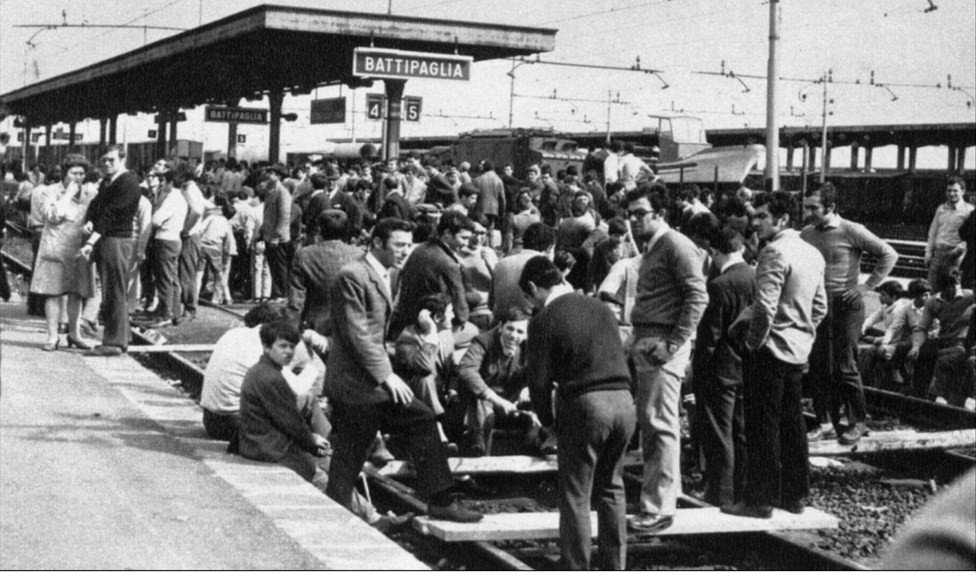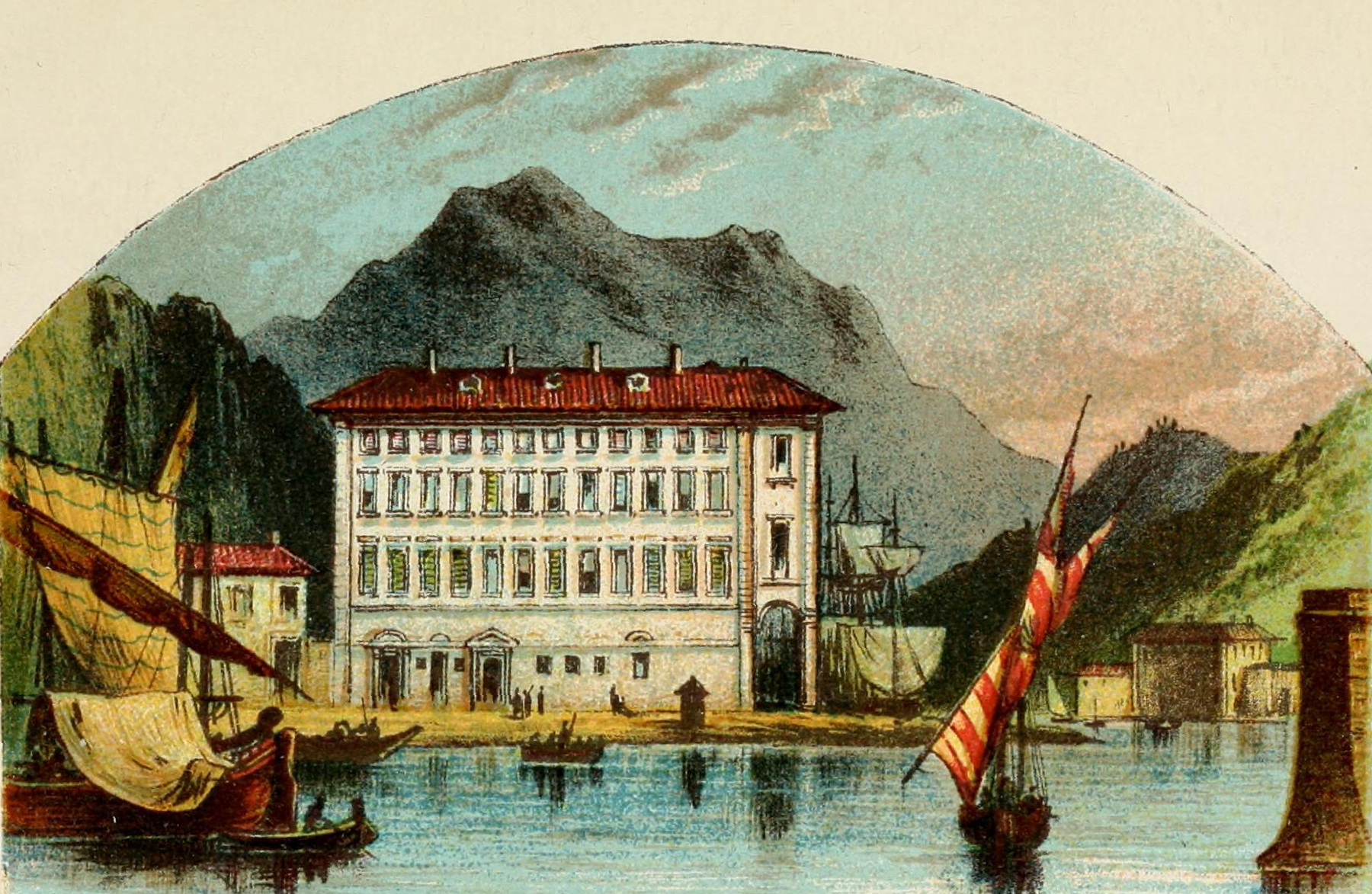|
Faiano
Faiano is an Italian town and hamlet (''frazione'') of the municipality of Pontecagnano Faiano in the province of Salerno, Campania region. Along with the main town of Pontecagnano it is ''de jure'' the secondary seat of its municipality. History Town's name derives from the word ''fajo'', meaning beech in Neapolitan language, Neapolitan, and is referred to a beechwood. Located on an area rich of thermal waters, still known in Ancient Rome, Ancient Roman era, the town counts a spring named Sette Bocche (''Seven Mouths''). 1 km from its center, but in the municipal territory of Montecorvino Pugliano, there are located some ancient Thermae () with a spring of sulphurous water. Geography Faiano is a hilltown that lies on the road linking Pontecagnano (4 km) to Montecorvino Pugliano (5,5 km) and the village of Santa Tecla (Montecorvino Pugliano), Santa Tecla (3 km). It is located below the Monti Picentini, Picentini mountain range and the Monti Picentini Regional ... [...More Info...] [...Related Items...] OR: [Wikipedia] [Google] [Baidu] |
Pontecagnano Faiano
Pontecagnano Faiano (also known simply as Pontecagnano) is a town and ''comune'' of the province of Salerno in the Campania region of south-west Italy. The area dates back to Roman times when the city of Picentia stood in its place and was destroyed by the Romans after the Second Punic War. Geography Located in the south-eastern suburb of Salerno, the municipality is formed by the towns of Pontecagnano (the main center and municipal seat), Faiano (a small hill town, secondary seat), and by the villages of Baroncino, Corvinia, Magazzeno, Pagliarone, Picciola, and Sant'Antonio a Picenzia. It borders with Battipaglia, Bellizzi, Giffoni Valle Piana, Montecorvino Pugliano, and Salerno. The town of Pontecagnano is the municipal seat and the most populated settlement of the ''comune''. It is situated close to the urban area of Salerno and a few kilometers from the coast. The village of Faiano, the co-official administrative seat, is located a few kilometers from Pontecagnano on the ... [...More Info...] [...Related Items...] OR: [Wikipedia] [Google] [Baidu] |
Salerno Costa D'Amalfi Airport
Salerno Costa d'Amalfi Airport , is an international airport airport located in the comune of Pontecagnano Faiano in southern Italy. It serves the city of Salerno and the coastal areas of Amalfi . It is also known as ''Salerno-Pontecagnano Airport''. History Early development The airport was founded by the Aeronautica Militare, Italy's Air Force, in 1926. A flight training facility was in operation between 1933 and 1943. The first hangar was designed by Pier Luigi Nervi, a famous architect. In 1946, a meteorological service was established, and in 1952, the Salerno Air Club was founded. The airport has hosted a Carabinieri helipad since 1975, and a Firefighter helipad and parachuting school since 1984. A new control tower was built in 1987. The airport was used exclusively by the Carabinieri, Vigili del Fuoco, flight and parachuting school and small private jets until 2007. The airport was then upgraded to accommodate airline service, with four check-in desks, two boarding ... [...More Info...] [...Related Items...] OR: [Wikipedia] [Google] [Baidu] |
Montecorvino Pugliano
Montecorvino Pugliano is a town and ''comune'' in the province of Salerno in the Campania region of south-west Italy. The communal seat is in Pugliano; no settlement in the municipality is called "Montecorvino", a toponym related to the nearby commune of Montecorvino Rovella. Geography Montecorvino borders with the municipalities of Bellizzi, Giffoni Valle Piana, Montecorvino Rovella and Pontecagnano Faiano. It includes the ''frazioni'' of Pugliano (seat), Bivio Pratole, Pagliarone, Santa Tecla, San Vito and Torello. Main sights In south of Santa Tecla, near the road linking the village to Faiano, there are some ancient Roman thermae In ancient Rome, (from Greek , "hot") and (from Greek ) were facilities for bathing. usually refers to the large Roman Empire, imperial public bath, bath complexes, while were smaller-scale facilities, public or private, that existed i ... () with a spring of sulphurous water. References External links Official website ... [...More Info...] [...Related Items...] OR: [Wikipedia] [Google] [Baidu] |
Giffoni Valle Piana
Giffoni Valle Piana, commonly known as Giffoni, is a town and comune in the Province of Salerno, Campania, southwestern Italy. Economy is mostly based on agriculture, with the presence of a small number of light industries and services firms. History Giffoni area was the seat of the ancient town of , which was destroyed two times by the Romans in the course of their conquest of southern Italy. Geography The town is situated in a hill zone by the Picentini mountains. The municipality is extended from the urban and industrial area between Salerno and Pontecagnano to the mountain range at the borders with the Province of Avellino. It borders with the municipalities of Acerno, Calvanico, Giffoni Sei Casali, Montecorvino Pugliano, Montecorvino Rovella, Montella, Pontecagnano Faiano, Salerno, San Cipriano Picentino and Serino. Giffoni is divided into 14 ''frazioni'' and Mercato,Meaning "Market" in Italian. commonly also identified simply as Giffoni Valle Piana, is the admi ... [...More Info...] [...Related Items...] OR: [Wikipedia] [Google] [Baidu] |
Battipaglia
Battipaglia () is a municipality (''comune'') in the province of Salerno, in the Campania region of southern Italy. The town is renowned for its production of buffalo mozzarella and is one of the most productive agricultural centers in the Sele Plain. It also serves as the area’s main industrial and railway hub. Historically, Battipaglia was colonized by both the Magna Graecia, Greeks and the Ancient Rome, Romans, along with the nearby town of Eboli, of which it remained a part until March 28, 1929. During World War II, it suffered repeated Allied air raids as part of Operation Avalanche. In the postwar period, Battipaglia experienced rapid demographic, agricultural, and industrial growth. History Formerly part of the Ancient Greece, ancient Greek colonies of the Magna Graecia, the municipal area was home to strategic Roman settlements during the Roman Republic, late Republican-Roman Empire, early Imperial times, as was typical of much of the southern Tyrrhenian Sea, Tyrrheni ... [...More Info...] [...Related Items...] OR: [Wikipedia] [Google] [Baidu] |
Bellizzi
Bellizzi is a town and comune in the province of Salerno in the Campania region of south-western Italy. History Bellizzi was a ''frazione'' of Montecorvino Rovella until 2 January 1990, when it became a comune following a referendum held in 1988. Geography Bellizzi borders with the municipalities of Battipaglia, Montecorvino Pugliano, Montecorvino Rovella and Pontecagnano Faiano. It is 3 km far from Battipaglia, 5 from Macchia, 6 from Pontecagnano, 11 from Montecorvino Rovella and 20 from Salerno. Transport Bellizzi is crossed by the national highway SS 18 and by the A2 motorway, with nearest exits in Battipaglia and Montecorvino Pugliano. It is served by the railway station of Montecorvino and the Salerno Costa d'Amalfi Airport Salerno Costa d'Amalfi Airport , is an international airport airport located in the comune of Pontecagnano Faiano in southern Italy. It serves the city of Salerno and the coastal areas of Amalfi . It is also known as ''Salerno-Pontecagnano ... [...More Info...] [...Related Items...] OR: [Wikipedia] [Google] [Baidu] |
Salerno
Salerno (, ; ; ) is an ancient city and ''comune'' (municipality) in Campania, southwestern Italy, and is the capital of the namesake province, being the second largest city in the region by number of inhabitants, after Naples. It is located on the Gulf of Salerno on the Tyrrhenian Sea. In recent history the city hosted Victor Emmanuel III, the King of Italy, who moved from Rome in 1943 after Italy negotiated a peace with the Allies in World War II, making Salerno the capital of the "Government of the South" () and therefore provisional government seat (and de facto Capital) for six months and so one of the former capitals of Italy. Some of the Allied landings during Operation Avalanche (the invasion of Italy) occurred near Salerno. It has 125,958 inhabitants as of 2025. Human settlement at Salerno has a rich and vibrant past, dating back to pre-historic times. In the early Middle Ages it was an independent Lombard principality, the Principality of Salerno, which around ... [...More Info...] [...Related Items...] OR: [Wikipedia] [Google] [Baidu] |
Campania
Campania is an administrative Regions of Italy, region of Italy located in Southern Italy; most of it is in the south-western portion of the Italian Peninsula (with the Tyrrhenian Sea to its west), but it also includes the small Phlegraean Islands and the island of Capri. The capital of the region is Naples. Campania has a population of 5,575,025 as of 2025, making it Italy's third most populous region, and, with an area of , its most densely populated region. Based on its Gross domestic product, GDP, Campania is also the most economically productive region in Southern Italy List of Italian regions by GDP, and the 7th most productive in the whole country. Naples' urban area, which is in Campania, is the List of urban areas in the European Union, eighth most populous in the European Union. The region is home to 10 of the 58 List of World Heritage Sites in Italy, UNESCO sites in Italy, including Pompeii and Herculaneum, the Royal Palace of Caserta, the Amalfi Coast, the Longobardian ... [...More Info...] [...Related Items...] OR: [Wikipedia] [Google] [Baidu] |
Giuseppe Garibaldi
Giuseppe Maria Garibaldi ( , ;In his native Ligurian language, he is known as (). In his particular Niçard dialect of Ligurian, he was known as () or (). 4 July 1807 – 2 June 1882) was an Italian general, revolutionary and republican. He contributed to Italian unification (Risorgimento) and the creation of the Kingdom of Italy. He is considered to be one of Italy's " fathers of the fatherland", along with Camillo Benso di Cavour, King Victor Emmanuel II and Giuseppe Mazzini. Garibaldi is also known as the "Hero of the Two Worlds" because of his military enterprises in South America and Europe. Garibaldi was a follower of the Italian nationalist Mazzini and embraced the republican nationalism of the Young Italy movement. He became a supporter of Italian unification under a democratic republican government. However, breaking with Mazzini, he pragmatically allied himself with the monarchist Cavour and Kingdom of Sardinia in the struggle for independence, subordinati ... [...More Info...] [...Related Items...] OR: [Wikipedia] [Google] [Baidu] |
Aqueduct (water Supply)
An aqueduct is a watercourse constructed to carry water from a source to a distribution point far away. In modern engineering, the term ''aqueduct'' is used for any system of pipes, ditches, canals, tunnels, and other structures used for this purpose. The term ''aqueduct'' also often refers specifically to aqueduct (bridge), a bridge carrying an artificial watercourse. Aqueducts were used in ancient Greece, the ancient Near East, Roman aqueduct, ancient Rome, Chapultepec aqueduct, ancient Aztec, and Inca aqueducts, ancient Inca. The simplest aqueducts are small ditches cut into the earth. Much larger channels may be used in modern aqueducts. Aqueducts sometimes run for some or all of their path through tunnels constructed underground. Modern aqueducts may also use pipelines. Historically, agricultural societies have constructed aqueducts to irrigate crops and supply large cities with drinking water. Etymology The word ''aqueduct'' is derived from the Latin words (''water'') a ... [...More Info...] [...Related Items...] OR: [Wikipedia] [Google] [Baidu] |



